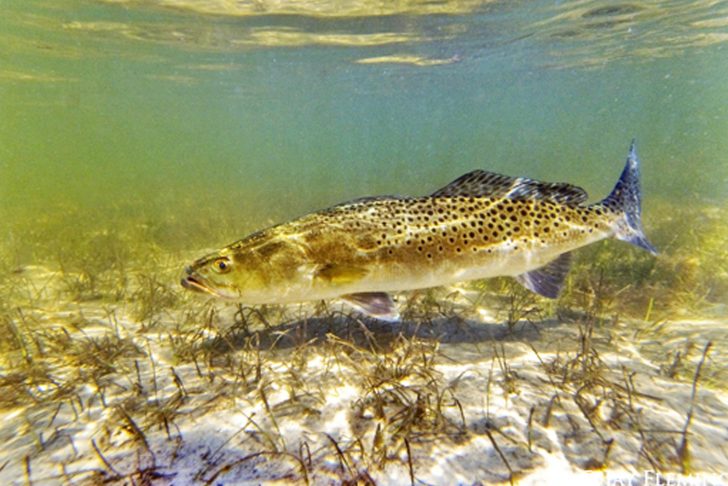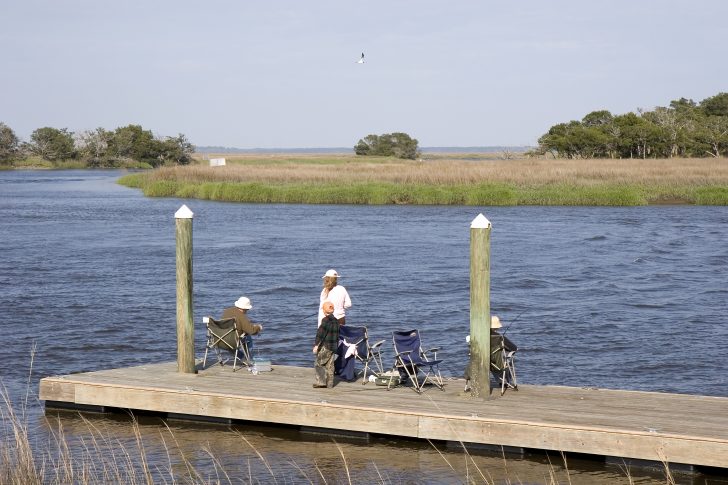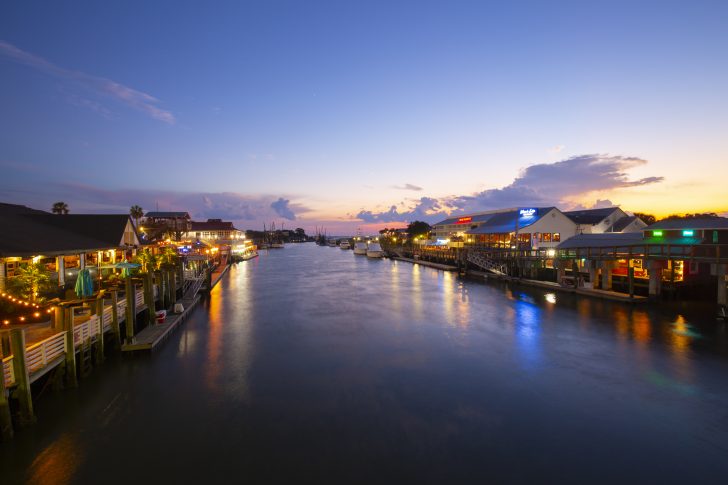In order to focus on fishing and enjoy the sport or just the leisure, a number of things are needed, the main ingredient being fish!
But, in order to have fish, you need habitat. What is habitat? Habitat is a home where all the right combinations of ingredients are there to sustain the life or part life of fish or animals in general.
This could even apply to humans, but we are talking about fish at this time. As an example, I will be explaining the right habitat for the Spotted Seatrout.
Seatrout are in the Drum family and part of their life cycle begins with drumming, a sound the males use to attract females to spawn and breed.
It has also been used to call other males and females to group up for other reasons, like migration and sounds of duress.
Habitat and spawning grounds—a location that the fish can lay their eggs where the water is not too deep and is well oxygenated with good water flow or tidal flow so the water does not become too warm or stagnate.
Otherwise, their eggs could become overheated, lack oxygen, creating symptoms and spoiling the eggs.
The water needs to be clean, which usually means there is plenty of microorganisms and crustaceans to help filter the water from fecal matter and waste build up by decaying organic matter.
These crustaceans and microorganisms will also become food for the young trout after hatching.
There are only four main known spawning sites in the Charleston Harbor for the Spotted Sea Trout at this time.
The young trout will stay in this habitat until they are large enough to venture out to new locations where they will start to live their adult lives.
Usually, returning and feeding then spawning themselves in the same habitat. There are only four main known spawning sites in the Charleston Harbor for the Spotted Sea Trout at this time.
The largest of the four is located near the Mount Pleasant Pier at the Memorial Waterfront Park, making this habitat crucial for some fish and marine mammals.
A number of species of fish require the same ingredients and locations to complete their life cycle.
If the habitats are interrupted or destroyed by over development, pollution or misuse, the fish will not survive or their numbers could be reduced tremendously.
For example, in a flat that has all the requirements needed for the fish and animals, it would be fine if a few small sport boats ran through the flat occasionally.
After all, nature allows for some interruption, and I myself enjoy boating. But, if you were to throw 20 or 30 large boats a day, the damage would be tremendous.
The prop wash alone from the motors in the shallow water would displace the sediment, which carries the microorganisms and crustaceans needed to sustain the juvenile fish and filter the water.
Without them, the water becomes polluted with high quantities of fecal matter and waste from decaying fish and plant life.
No crustaceans means no small fish. No small fish, no big fish.
We would definitely want to refrain from building marinas on top of these four known locations and bringing in large boats exceeding 23 to 40 feet, like ferries, water taxis, etc… wouldn’t we?
If this takes place, a domino effect would occur.
No crustaceans means no small fish. No small fish, no big fish. No big fish, no food for the Osprey, the Pelican, the Seagull, sea ducks, turtles, dolphin, etc., and then us. That is the domino effect. Some are thinking, “All that because of too many boats or large boats in a flat? No way!”
Well, just think, if you have a field of corn, and you drive a few tractors through it, you will still have corn, but if you drive 30 large tractors through it, what do you think happens?
Not enough corn, no food for some livestock, no alternative fuels, no cornflower, and so on. The results are the same. This is where conservation comes in.
What is conservation? The definition is: “Prevention of wasteful use of a resource or preservation, protection, or restoration of the natural environment and of wildlife.”
Conservation is a word that a lot of federal, state, county and city officials have apparently forgotten.
With all the deals going on between private developers, cities and towns developing for their own purposes.
They end up abusing and removing the protections in place for our conservation wetlands and public property by rezoning these properties to accommodate them for their own private use.
They then tell the public they are doing it for us. In most cases, the public is completely unaware of these projects until they are in the construction phase.
In order for us to help with conservation so that we can enjoy what Mother Nature has to offer, for not only us, but for the future of our children and their children to come a large number of individuals have spoken out.
They have contacted city, town, county, state and federal officials about all kinds of projects and land that has been rezoned and damaged by their actions.
Unfortunately, in most cases, it has all fallen on deaf ears. There are other federal and state organizations that are put in place to help protect our environment.
The are government organizations like SCDHEC, SCDNR, U.S. Fish and Wildlife Service and affiliations, which approve or disapprove permits required for development.
Somehow, in my opinion, these organizations have dropped the ball and have not been looking out for our environment’s best interest.
Too many permits have been given, resulting in serious damage to habitats.
One example that stands out strongly here in the Lowcountry is Shem Creek. Overbuilding, over-dredging, too many boats in one vicinity and the public has tried legal action, petitions, bumper stickers, etc.
They have contacted conservation groups. The locals have cried out trying to stop the chaos. The results are exactly that—chaos!
Commercial buildings are everywhere, a parking garage and parking lots that collect rainwater all along the creek.
The rainwater passes through antifreeze, motor oil, fertilizer, pesticides and more, and is not allowed to filter naturally through the ground before it enters our waterways.
It’s a method that has been put in place by Mother Nature before man walked the Earth. Instead, the rainwater rolls through a concrete jungle across blacktop, down gullies and drainpipes directly into the creek.
There has been over-dredging, compiled construction, pile driving and over-boating, resulting in boating accidents, severe pollution, deaths of wildlife, including three Manatees in 2016.
I apologize for sounding so bleak, but sometimes in order to understand the severity of a situation, it takes details and definitions.
If you would like to help with conservation efforts concerning our local environment, I recommend contacting your local media.
Let your voice be heard. After all, these environments are not only yours, but the future’s. So, please help by keeping a lookout for these town and private projects around you.
Yours might be the joining voice that turns the tide and helps us maintain what habitats we have left.
I hope this inspires individuals to take a stand and help protect our precious resources.
Until next time, good luck out there and have fun fishing! To view some fishing adventures, go to my YouTube Channel Fishing With Jiggin Jerry.






